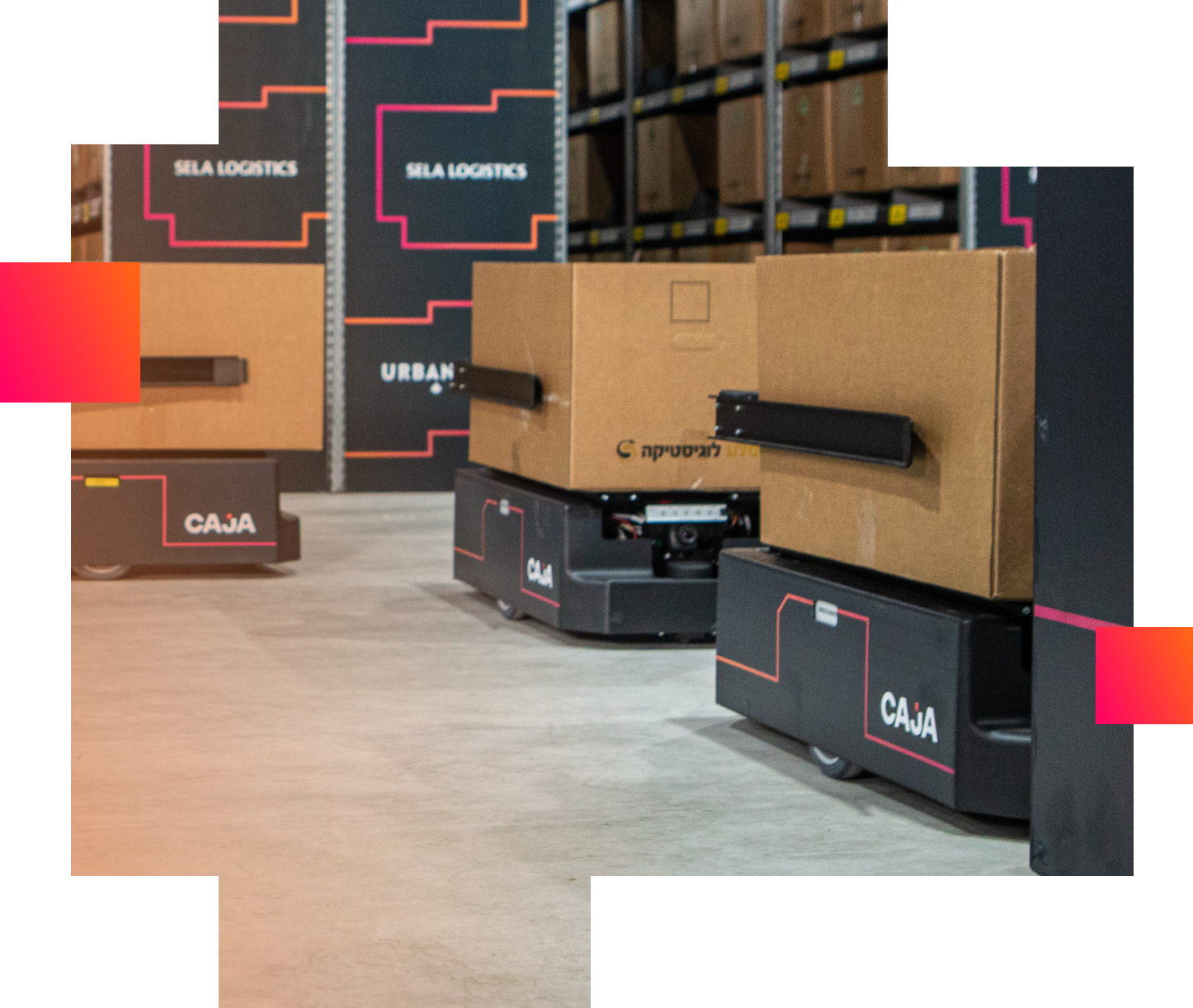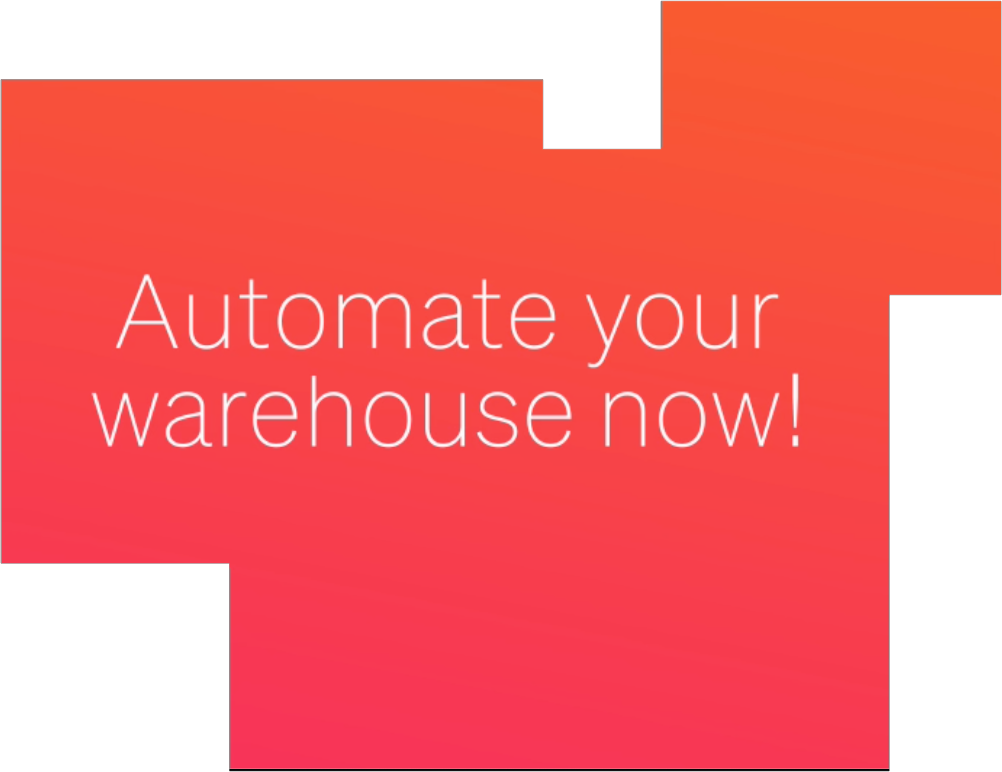10 Factors to Consider Before Automating Your Warehouse
Your complete terminology guide by Caja Robotics
Warehouse automation has gained widespread recognition over the past few years,with more and more warehouses automating their most business critical operations. So much so that the warehouse automation market is expected to reach $41B by 2027, at a CAGR of 15%. Now, more than ever, warehouse operation managers are understanding that automating their operations saves them time and money, and reduces errors.
While there’s no shortage of benefits to warehouse automation, there’s a lot to consider before taking the leap. How can you be certain that you are making the right choice of software and robots? By understanding all that surrounds automation and implementation of a warehouse automation system, you can be better equipped to make a more knowledgeable decision.
This article plans to break down warehouse automation and provide you with a list of considerations before diving into it.

What Is Warehouse Automation?
Warehouse automation is the act of automating the movement of inventory within a warehouse, from the point they are received to the point they are delivered. Warehouse automation lies in the idea of minimizing the need for human intervention at every stage of the operation, which maximizes efficiency and enables the business to gain better control and visibility over their warehouse operations.
An example of warehouse automation is a robot carrying inventory from one station all the way to the shipping area. At the same time, software is doing its work recording the movement and optimizing routes. The robots and the software work together to improve the efficiency, speed and accuracy of the task at hand.
How Does Warehouse Automation Work?
As mentioned above, warehouse automation works when software and robots work together to automate almost every step within the warehouse operations’ processes. The process of automating your warehouse usually starts with a warehouse management system (WMS) that sits at the core of the entire warehouse and ensures that goods are moved throughout the warehouse in the most efficient and cost effective way possible.
A WMS is responsible for many aspects of a warehouse’s operations:
• Inventory tracking • Picking • Receiving • Putaway • Efficient inventory management • And much more
Your WMS integrates with other solutions such as inventory management software, to make all processes within the warehouse more efficient and automated.
Warehouse automation can range from simple to complex, from just using robots and machinery, to making complete use of AI to automate and optimize operations. It all depends on the needs of the business and the operations of the warehouse.
10 Considerations to Make Before Automating Your Warehouse
Now that you have an understanding of what warehouse automation is and how it works, you probably think you’re ready to start. But there are a few things you need to consider before diving right into automation of your warehouse, like the type of warehouse you have, your operations, your processes and much more. Here is a list of 10 things to consider.
Don’t Wait…Automate!
With so many warehouses moving to automation these days, not doing so will leave your warehouse behind in terms of competition. Automation seems inevitable, but with so many choices out there how can you be sure you’re making the right decision for your business?
Follow the list above and do your due diligence to ensure the automated solution you choose for your warehouse suits its needs and can supply the demand of your warehouse’s operations.

 One of your first considerations should be how you plan to build your automated warehouse. Greenfield refers to new builds on undisturbed land, and brownfield describes the continuation of existing projects on a site that has already been built.
One of your first considerations should be how you plan to build your automated warehouse. Greenfield refers to new builds on undisturbed land, and brownfield describes the continuation of existing projects on a site that has already been built. In order to begin automating your warehouse, you’ll need to consider the operations going on within it first. Is your warehouse omnichannel? Retail? eCommerce? 3PL?
In order to begin automating your warehouse, you’ll need to consider the operations going on within it first. Is your warehouse omnichannel? Retail? eCommerce? 3PL? Automating your warehouse allows you to improve traceability, reduce the need for manual labor, and lower operational costs, especially during the inbound process. Starting from verifying inventory when it arrives and all the way until it reaches the storage area, you’ll want a solution that can handle inventory as it arrives and check it and scan it in the most efficient way possible.
Automating your warehouse allows you to improve traceability, reduce the need for manual labor, and lower operational costs, especially during the inbound process. Starting from verifying inventory when it arrives and all the way until it reaches the storage area, you’ll want a solution that can handle inventory as it arrives and check it and scan it in the most efficient way possible. Another thing to consider before automating your warehouse is your product specifications. The volume and weight of your product may affect the types of robots and software solutions that your warehouse will need.
Another thing to consider before automating your warehouse is your product specifications. The volume and weight of your product may affect the types of robots and software solutions that your warehouse will need. Manual picking is one of the most labor intensive aspects of goods-handling. Think about it: you have to walk to the targeted rack, retrieve the product, put it in its proper tray or container, and then get walk to the next SKU’s location. All these little steps are cumbersome and time guzzling. Any improvements to this aspect of your warehouse will make a huge difference.
Manual picking is one of the most labor intensive aspects of goods-handling. Think about it: you have to walk to the targeted rack, retrieve the product, put it in its proper tray or container, and then get walk to the next SKU’s location. All these little steps are cumbersome and time guzzling. Any improvements to this aspect of your warehouse will make a huge difference. You need your warehouse automation solution to adapt and scale to your warehouse’s volumes, but also, you need to know how big your automation solution needs to be to begin with based on your SKU volume.
You need your warehouse automation solution to adapt and scale to your warehouse’s volumes, but also, you need to know how big your automation solution needs to be to begin with based on your SKU volume. Since the birth of eCommerce, reverse logistics has boomed to massive proportions. Reverse logistics refers to the movement of goods backwards through the supply chain. This encompasses everything from returns to recycling materials.
Since the birth of eCommerce, reverse logistics has boomed to massive proportions. Reverse logistics refers to the movement of goods backwards through the supply chain. This encompasses everything from returns to recycling materials. Warehouse’s will likely always need some kind of human intervention at certain stages of their operations. The current status quo is that warehouse’s rely heavily on human resources to power machines and execute tasks. This leaves a lot of room for risk and error that hinders productivity and profitability of the warehouse overall.
Warehouse’s will likely always need some kind of human intervention at certain stages of their operations. The current status quo is that warehouse’s rely heavily on human resources to power machines and execute tasks. This leaves a lot of room for risk and error that hinders productivity and profitability of the warehouse overall. In order to best gauge what kind of warehouse automation solution would best fit your needs, you need to also consider your peak to non-peak ratio. This means you need to understand the trends and peaks within your warehouse’s operational activity and choose a solution that has the ability to supply your demand.
In order to best gauge what kind of warehouse automation solution would best fit your needs, you need to also consider your peak to non-peak ratio. This means you need to understand the trends and peaks within your warehouse’s operational activity and choose a solution that has the ability to supply your demand. Implementing an automated warehouse should bring you positive results and a strong ROI within 2 years of launching it. Automation for your warehouse can be measured by the volume of the operation and how much your warehouse has been able to take on since implementing your automated processes.
Implementing an automated warehouse should bring you positive results and a strong ROI within 2 years of launching it. Automation for your warehouse can be measured by the volume of the operation and how much your warehouse has been able to take on since implementing your automated processes.

